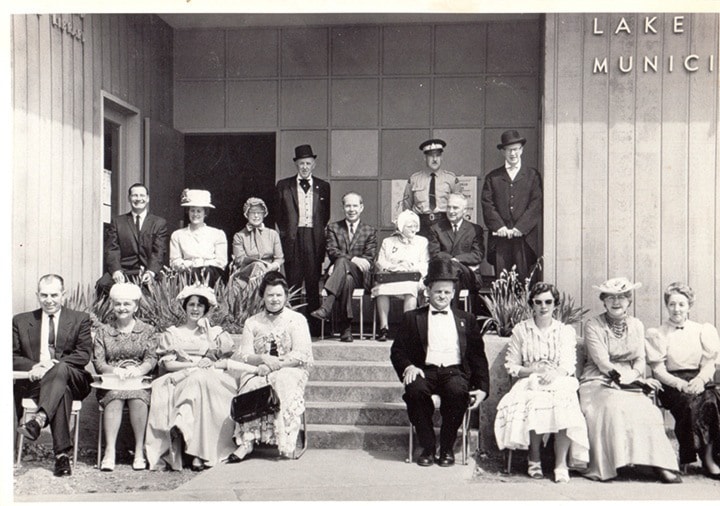In the 1950s Lake Cowichan and the surrounding communities were a going concern.
Population was growing, jobs were plentiful and life was good. School District 66 comprised the entire area which amounted to 638 square miles.
Included under the name Lake Cowichan area was the Village of Lake Cowichan, Mesachie Lake, Honeymoon Bay and Youbou. The majority of the whole population, which numbered about 6,101 (1951 estimate) were dependant on the local logging and lumber mill operations.
The rail line that serviced the logging industry in the area included a branch line of the E & N Railway (Esquimalt and Nanaimo Railway), which belonged to the Canadian Pacific railway (CPR). The CNR (Canadian National Railway) also ran a freight service.
According to Lake Cowichan Area section of the B.C. Towns and Villages Facts, there was also a commercial transit service and a freight service handled by trucks which ran a scheduled service to principal points on Vancouver Island.
Logging operations in the area were on a large scale which enabled them to service the requirements of the local surrounding lumber mills.
Wood waste, which was turned to chips by recently installed chipper plants, was then transported to the pulp plant near Nanaimo. Hence the use of the word Chipper truck.
The only real agricultural aspect of the area was in the growth and harvest of timber although a few small farms producing vegetables, poultry and dairy products dotted the area.
During this era the area was powered by the B. C. Power Commission with service to 537 businesses and residences — 402 being in the Village of lake Cowichan.
Hillcrest Lumber Company Limited at Mesachie Lake had its own diesel-electric stand-by power plant for emergencies. Water services were provided by the Village of Lake Cowichan while B. C. Forest Products Limited, provided the water system in Youbou.
Telephone service by B.C. Telephone Company was provided to 134 businesses and 306 residential homes in the Lake Cowichan exchange and 18 outlying toll-stations.
School District 66 oversaw operation of six elementary and one junior-senior high school for the 1,047 area students.
Lake Cowichan was incorporated as the Village of Lake Cowichan in 1944.
At that time the village area took in 593 acres and had grown to 779 hectares by 2002. The village population, in 1951, was recorded at 1,628.
The lone highway to Duncan is today referred to as the Old Road. A new highway, known as Highway 18 was completed in the early 1970s.
In 1996 the Village of Lake Cowichan officially became a Town and by 2011, as cited in the official census of that year, the population had risen to 3,159.
What began as a small village has become a small town.
